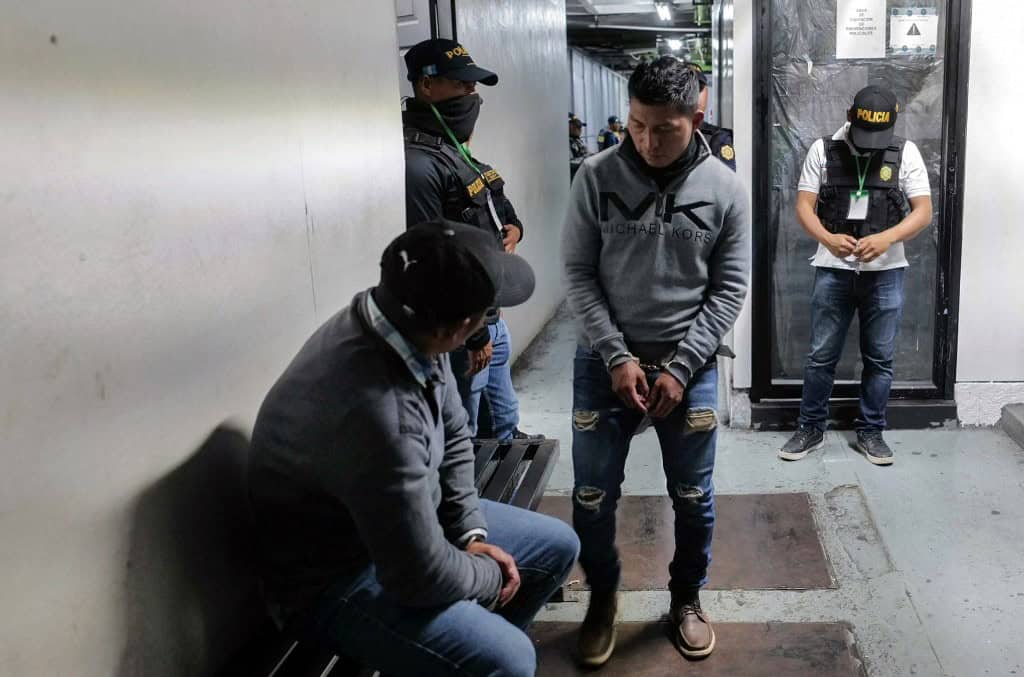Guatemala faces ongoing challenges with gang activity, and recent events highlight how these groups test the system’s limits. On October 12, officials announced that 20 leaders from the Barrio 18 gang had broken out of Fraijanes II prison, a facility near the capital.
This incident led to quick action, including the arrest of 23 guards just days ago on October 25. For people in Costa Rica, this matters because Central America shares borders and similar issues with organized crime that can spill over into travel routes and daily life.
The escape itself happened over several days. Inmates left in small groups, often one or two at a time, possibly slipping out during family visits. Prison staff only noticed after a full headcount, which points to gaps in monitoring. Barrio 18, known for extortion and violence, holds sway in Guatemala, El Salvador, and Honduras. The U.S. and Guatemala both label it a terrorist group, a status set last month to curb its operations.
President Bernardo Arévalo responded fast. He ousted top security officials, including the interior minister and prison director, after the breakout came to light. The new interior minister, Marco Antonio Villeda, took office on October 24 and right away asked for FBI support to track down the remaining fugitives. So far, forces have caught four of the 20 escapees, but 16 stay at large. Borders with Honduras and Mexico saw extra patrols to stop any cross-border movement.
Then came the arrests. Prosecutors and police raided Fraijanes II and nearby spots, detaining the 23 guards from the “A” squad, who watched over 256 Barrio 18 inmates. They face charges of helping the escape and neglecting their jobs.
This adds to earlier captures, like former subdirector Víctor Arnoldo Alveño Barco from the “B” group. An arrest warrant also went out for ex-vice minister Claudia del Rosario Palencia Morales on related counts. These moves show a deep probe into corruption inside the prison system, named “Corrupción en el Sistema Penitenciario” by investigators.
Gangs like Barrio 18 tie into much of Guatemala’s crime. Authorities link them to nearly half of violent acts, including hits on shop owners and bus operators for protection money. Last week, rescuers found eight bodies under a bridge near the capital, wrapped in bags, though no one has connected it to gangs yet. Together with rivals like Mara Salvatrucha (MS-13), these groups have caused massive harm—estimates from El Salvador put deaths at 200,000 over 30 years.
Homicide numbers tell part of the story. Guatemala closed 2024 with 16.1 killings per 100,000 people, more than twice the global norm. This year, it climbed to 17.65. For context, here’s a quick look at rates across Central America based on recent data:
| Country | Homicide Rate per 100,000 (2024) | Change in 2025 |
|---|---|---|
| Guatemala | 16.1 | Up to 17.65 |
| El Salvador | 2.4 (post-crackdown) | Stable |
| Honduras | 35.1 | Slight drop |
| Costa Rica | 11.5 | Steady |
| Nicaragua | 7.2 | Minor rise |
These figures come from official reports and show how gang control varies. El Salvador’s low rate follows a hardline approach under President Bukele, locking up thousands in mega-prisons. Guatemala now eyes something similar, pushing for a new max-security site with tight visits, voice logs, and isolation cells.
Congress stepped up too. On October 21, they passed a law tagging gangs as terrorists, a bill stalled for years but rushed after the escape. This lets courts hit them harder, freezing assets and blocking ties. It builds on U.S. actions, which blacklisted Barrio 18 for drug links and attacks on cops and civilians.
Arévalo called the breakout a plot by Barrio 18 insiders. Past incidents back this— in 2018, 14 gang members fled with guard help for cash payoffs. Earlier this year, riots in Guatemala prisons saw guards taken hostage, demanding leader transfers. In July 2024, officials moved 10 Barrio 18 and MS-13 bosses to isolation after a funeral massacre, sparking more unrest where one guard died.
For Costa Rica, this serves as a reminder of regional ties. Gangs don’t stop at borders, and escapes like this could push activity south. Travelers heading north might face road checks or alerts, though Costa Rica keeps tighter controls. Local forces here focus on prevention, with community programs cutting youth recruitment into similar groups.
Guatemala holds about 3,000 gang members in prison out of 12,000 active ones and helpers. Fixing the system means tackling bribes and weak oversight. The FBI’s role could bring tech like tracking tools and intel sharing, proven in past Central American ops.
As searches continue, expect more arrests. The 23 guards’ cases will test how far corruption runs. Prosecutors aim to build strong evidence from raids, including phones and docs seized. If proven, it could lead to broader reforms, like better pay and training for staff to resist gang sway.
This event pushes Guatemala toward El Salvador’s model, but with its own twist. Building a new prison takes time and funds, and the law change helps in the short term. For now, the focus stays on recapturing the 16 at large, who pose risks to public safety.
In Central America, security links us all. For us here in Costa Rica, watching this might see echoes in local efforts against drug routes and extortion rings. Staying informed helps plan safe trips and supports calls for cross-border cooperation. As details emerge, Guatemala’s handling could set examples for the region.






